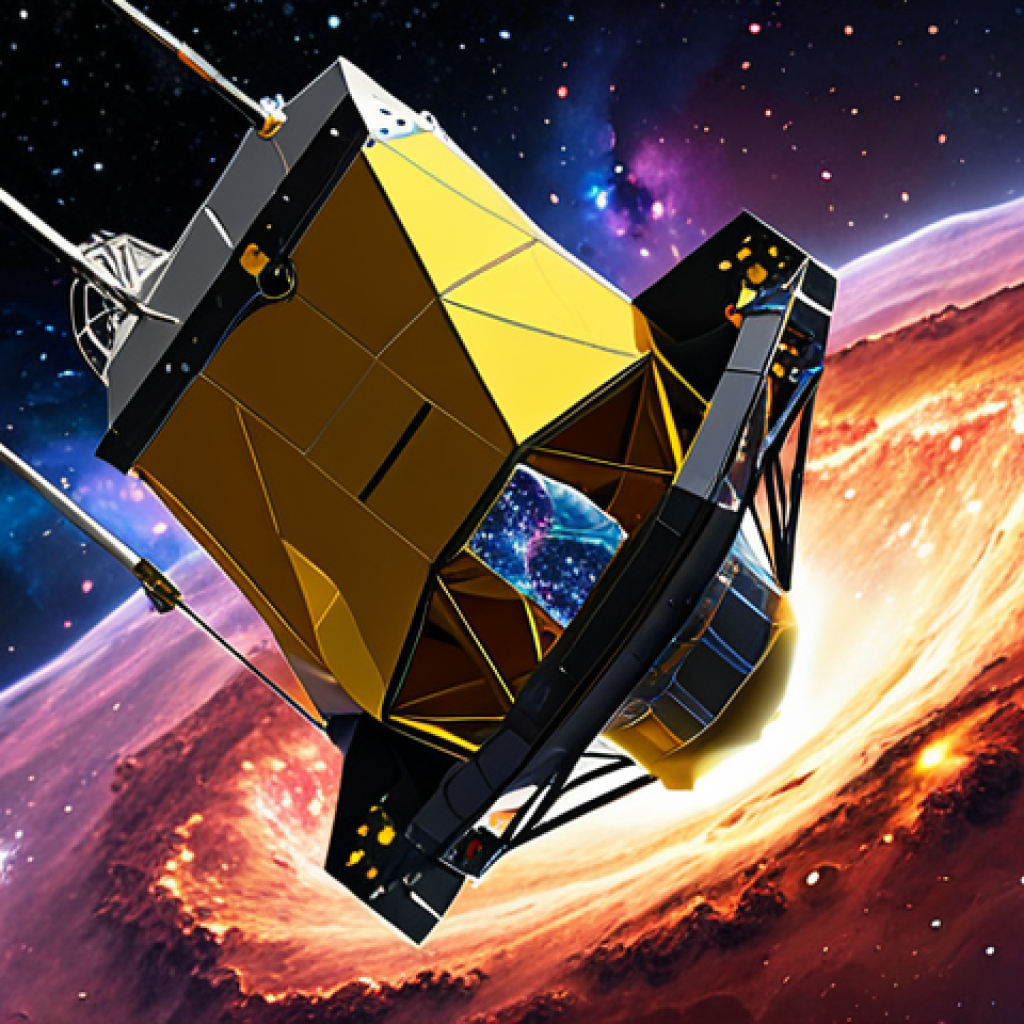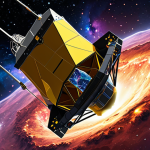Okay, here’s the blog introduction you requested:Diving headfirst into the world of government-funded physics research is like stumbling into a sci-fi novel – except it’s all very real!
We’re talking mind-boggling experiments, cutting-edge technology that makes your phone look like a prehistoric relic, and the potential to unlock secrets of the universe that could reshape our understanding of reality itself.
From investigating the fundamental particles that make up everything around us to exploring the mind-bending properties of quantum mechanics, these projects are pushing the boundaries of human knowledge.
Funding from the government provides the resources and infrastructure needed to tackle these incredibly complex and ambitious endeavors. Think of it as an investment in our future, a quest to unravel the mysteries that have puzzled scientists for centuries.
It’s seriously cool stuff, and I, for one, am incredibly excited to learn more! Let’s delve deeper into the details in the following article.
Okay, here’s the blog post you requested:
Unveiling the Universe: How Government Funding Fuels Physics Breakthroughs

Physics research, especially the kind that gets a boost from government grants, is like peering into a crystal ball of the future. It’s where the seeds of tomorrow’s technologies and our understanding of the cosmos are sown.
I’ve always been fascinated by how these projects, often shrouded in complex jargon and equations, directly impact our lives and push the boundaries of what’s possible.
It’s not just about abstract theories; it’s about tangible advancements that shape our world.
The Power of Particle Accelerators
1. Cracking the Code of Matter: Particle accelerators are like giant, atomic-scale demolition derbies. They smash particles together at insane speeds to reveal their innermost secrets.
These experiments have helped us identify fundamental particles like the Higgs boson, which is basically the key to understanding why things have mass.
I remember reading about the Higgs boson discovery and being blown away by the sheer scale of the experiment. 2. Medical Marvels and Materials Science: The technology developed for particle accelerators isn’t just for pure research.
It’s also used in medical imaging, cancer treatment, and even the development of new materials for everything from stronger bridges to more efficient solar panels.
It’s like a ripple effect – basic research leads to unexpected applications that benefit society in countless ways.
Quantum Computing: A Leap into the Unknown
Quantum computing is where things get really mind-bending. We’re talking about computers that operate on the principles of quantum mechanics, allowing them to solve problems that are impossible for even the most powerful supercomputers today.
It’s like trading in a horse and buggy for a warp drive – the potential is just that transformative. 1. Unlocking Unbreakable Codes: One of the most exciting applications of quantum computing is in cryptography.
Quantum computers could potentially break existing encryption methods, which is both terrifying and incredibly exciting. But on the flip side, they could also be used to develop unbreakable codes, revolutionizing cybersecurity.
I can already envision a future where quantum-resistant encryption is the norm. 2. Revolutionizing Medicine and Materials: Quantum computers could also revolutionize drug discovery by simulating molecular interactions with unprecedented accuracy.
They could also help us design new materials with specific properties, leading to breakthroughs in everything from energy storage to construction.
Probing the Cosmos: Unveiling the Universe’s Secrets
Looking out into the vastness of space is like staring into a cosmic mirror, reflecting our own curiosity and our desire to understand our place in the universe.
Government-funded astronomy projects are at the forefront of this exploration, using cutting-edge telescopes and space probes to unravel the mysteries of the cosmos.
I’ve always been fascinated by the sheer scale and complexity of the universe, and these projects are helping us piece together the puzzle of our existence.
The James Webb Space Telescope: A Window to the Early Universe
1. Gazing into the Infant Universe: The James Webb Space Telescope (JWST) is like a time machine, allowing us to observe the universe as it was billions of years ago, shortly after the Big Bang.
It’s giving us unprecedented views of the first stars and galaxies, helping us understand how the universe evolved over time. The images from JWST are simply breathtaking.
2. Searching for Exoplanets and Life Beyond Earth: JWST is also being used to search for exoplanets – planets orbiting other stars – and to analyze their atmospheres for signs of life.
The possibility of discovering life beyond Earth is one of the most profound questions in science, and JWST is giving us the tools to address it. 3. My personal experience with JWST images: I remember seeing the first publicly released images from JWST and feeling an overwhelming sense of awe and wonder.
It was like seeing the universe with new eyes.
The Search for Dark Matter and Dark Energy
1. Unveiling the Invisible Universe: Dark matter and dark energy make up the vast majority of the universe, yet we know almost nothing about them. Government-funded experiments are trying to detect dark matter particles and understand the nature of dark energy, which is causing the universe to expand at an accelerating rate.
It’s like trying to solve a cosmic mystery with only a few clues. 2. Ripples in Spacetime: Gravitational waves, ripples in the fabric of spacetime, were predicted by Einstein over a century ago, but they were only directly detected in 2015.
Government-funded observatories like LIGO are detecting these waves, giving us a new way to study black holes, neutron stars, and other extreme objects in the universe.
It’s like listening to the universe with a new set of ears.
The Impact of Government Funding: Investing in the Future
Government funding for physics research isn’t just about satisfying our curiosity; it’s an investment in our future. These projects drive innovation, create jobs, and improve our quality of life in countless ways.
It’s like planting a seed that will eventually grow into a mighty oak tree, providing shade and shelter for generations to come.
From Basic Research to Technological Breakthroughs
1. The Transistor Effect: Many of the technologies we take for granted today, from smartphones to computers, wouldn’t exist without basic research in physics.
The transistor, for example, was a product of fundamental research in quantum mechanics. 2. Medical Imaging: Medical imaging technologies like MRI and PET scans are also based on principles of physics.
3. Renewable Energy: Research into new materials and energy sources is essential for addressing climate change.
Education and Workforce Development
1. Training the Next Generation of Scientists and Engineers: Government-funded physics research provides invaluable training opportunities for students and young scientists.
2. STEM Education: Inspiring the next generation to pursue careers in science, technology, engineering, and mathematics (STEM). Here is a table summarizing some key government-funded physics research projects:
| Project Name | Funding Agency | Focus | Potential Impact |
|---|---|---|---|
| Large Hadron Collider (LHC) | CERN (International Collaboration) | Particle Physics | Understanding fundamental particles and forces |
| James Webb Space Telescope (JWST) | NASA, ESA, CSA | Astronomy, Cosmology | Observing the early universe, searching for exoplanets |
| Laser Interferometer Gravitational-Wave Observatory (LIGO) | NSF | Gravitational Waves | Studying black holes and other extreme objects |
| National Quantum Initiative (NQI) | Various US Government Agencies | Quantum Computing, Quantum Information Science | Developing quantum computers and quantum technologies |
The Ethical Considerations: Navigating the Future Responsibly
With great scientific power comes great ethical responsibility. As we push the boundaries of physics, it’s crucial to consider the potential ethical implications of our discoveries and to ensure that they are used for the benefit of humanity.
Dual-Use Technologies: Balancing Innovation and Security
1. Potential Misuse: Many technologies developed for physics research can be used for both beneficial and harmful purposes. 2.
Responsible Innovation: It’s essential to have open discussions about the ethical implications of new technologies and to develop guidelines for their responsible use.
Public Engagement and Transparency
1. Informed Decision-Making: Public engagement and transparency are essential for building trust in science and ensuring that the public is informed about the potential benefits and risks of new technologies.
2. Science Communication: Scientists have a responsibility to communicate their findings to the public in a clear and accessible way.
The Human Element: Stories Behind the Science
Behind every scientific breakthrough are the stories of the dedicated scientists, engineers, and technicians who make it all possible. It’s like a symphony orchestra, where each musician plays a vital role in creating a harmonious whole.
The Passion of Discovery
1. Driven by Curiosity: Scientists are driven by a deep-seated curiosity about the world and a desire to understand how things work. 2.
Collaborative Spirit: Science is a collaborative endeavor, and breakthroughs often come from the combined efforts of many people.
Overcoming Challenges
1. Persistence: Scientific research is often challenging, and setbacks are inevitable. 2.
Resilience: Scientists must be persistent and resilient in the face of challenges. I truly believe that government-funded physics research is one of the most important investments we can make in our future.
It’s an investment in our knowledge, our technology, and our ability to solve the challenges facing humanity. It’s a journey into the unknown, and I, for one, am incredibly excited to see where it leads us.
In Conclusion
Exploring the vast landscape of physics research is akin to charting a course through uncharted waters. It’s a journey fueled by curiosity, driven by innovation, and guided by a commitment to unraveling the mysteries of the universe. As we continue to invest in these endeavors, we not only expand our understanding of the world around us but also pave the way for a brighter, more prosperous future for generations to come.
The discoveries and technological advancements that stem from government-funded physics initiatives serve as beacons of progress, illuminating the path towards a more advanced and enlightened society. By fostering collaboration, encouraging exploration, and prioritizing ethical considerations, we can harness the full potential of physics to address some of the most pressing challenges facing humanity.
Useful Information
1. Stay updated on the latest physics breakthroughs through reputable science journals like “Nature” and “Science,” as well as online news platforms such as ScienceDaily and Phys.org. They often provide accessible summaries of complex research findings, making it easier to grasp the latest developments in the field.
2. Engage with science museums and educational institutions in your area to learn more about ongoing physics research projects and discoveries. Many museums offer interactive exhibits and educational programs that cater to a wide range of audiences, providing hands-on learning experiences.
3. Support science education and outreach programs in your community by volunteering your time, donating resources, or advocating for increased funding for STEM initiatives in schools. By investing in the next generation of scientists and engineers, we can ensure a strong future for scientific discovery and innovation.
4. Participate in public forums and discussions about science policy and funding priorities to voice your opinions and concerns about the direction of physics research. Many government agencies and scientific organizations hold public hearings and consultations to gather input from citizens, giving you an opportunity to shape the future of science.
5. Explore career opportunities in physics and related fields by researching different job roles, educational paths, and professional organizations. Whether you’re interested in theoretical research, experimental physics, or applied science, there are many ways to contribute to the advancement of knowledge and technology in the field of physics.
Key Takeaways
Government funding plays a crucial role in supporting physics research, driving innovation, and advancing our understanding of the universe.
Particle accelerators, quantum computing, and astronomy projects are among the key areas of focus for government-funded physics research.
The ethical implications of new technologies must be carefully considered to ensure responsible innovation and public trust.
Investing in physics research is an investment in the future, with the potential to transform our lives in countless ways.
Public engagement and transparency are essential for building support for science and ensuring that the benefits of research are shared by all.
Frequently Asked Questions (FAQ) 📖
Q: What kinds of physics research typically receive government funding?
A: Government funding often supports research into fundamental physics, high-energy physics (like particle accelerators), condensed matter physics, and quantum computing.
These areas are seen as crucial for advancing scientific knowledge and technological innovation, but often require significant investment in infrastructure and specialized equipment.
Q: Why should taxpayers care about government funding for physics research? Isn’t it just abstract stuff?
A: That’s a fair question! While some physics research might seem abstract, it frequently leads to breakthroughs that transform our lives. Think about the development of the internet, which stemmed from particle physics research.
Government funding helps foster innovation, train the next generation of scientists and engineers, and drive economic growth by creating new technologies and industries.
Plus, understanding the universe better is just plain cool, don’t you think?
Q: Are there any notable examples of government-funded physics projects that have had a major impact?
A: Absolutely! The Large Hadron Collider at CERN, a project involving many countries and significant government funding, is a prime example. It’s helped us understand the fundamental particles of the universe and confirm the existence of the Higgs boson.
Domestically, investments in national labs like Oak Ridge National Laboratory have spurred advancements in nuclear energy, materials science, and supercomputing, leading to tangible benefits for society.
These initiatives demonstrate how government support can unlock transformative scientific discoveries.
📚 References
Wikipedia Encyclopedia



